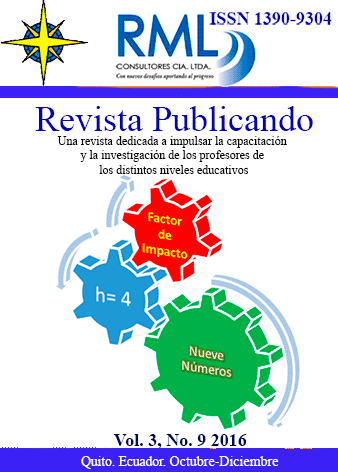Abstract
Una red bayesiana es un grafo acíclico dirigido en el que cada nodo representa una variable y cada arco una dependencia probabilística; son utilizadas para proveer: una forma compacta de representar el conocimiento y métodos flexibles de razonamiento. El obtener una red bayesiana a partir de datos es un proceso de aprendizaje que se divide en dos etapas: el aprendizaje estructural y el aprendizaje paramétrico. En este trabajo se define un método de aprendizaje automático que optimiza las redes bayesianas aplicadas a clasificación mediante la utilización de un método de aprendizaje híbrido que combina las ventajas de las técnicas de inducción de los árboles de decisión (TDIDT - C4.5) con las de las redes bayesianas.References
Andersen, S.K., Olesen, K.G., Jensen, F. (1989). HUGIN – a Shell for Building Belief
Universes for Expert Systems. In Proc. IJCAI, pages 1080-1085.
Beinlich, I.A., Suermondt, H.J., Chavez, R.M., Cooper, G.F. (1989). The ALARM monitoring system: A case study with two probabilistic inference techniques for belief networks. In proceedings of the 2nd European Conference on Artificial Intelligence in Medicine.
Bickmore, Timothy W. (1994). Real-Time Sensor Data Validation. NASA Contractor
Report 195295, National Aeronautics and Space Administration.
Blurock, Eduard S. (1996). The ID3 Algorithm. Research Institute for Symbolic Computation, Austria.
Breese, John S., Blake, Russ (1995). Automating Computer Bottleneck Detection with
Belief Nets. Proceedings of the Conference on Uncertainty in Artificial Intelligence,
Morgan Kaufmann, San Francisco, CA, pp 36-45.
Canavos, G.C. (1984). Probabilidad y Estadística, Aplicaciones y Métodos. Mc.Graw-Hill.
Carbajo, A., Curto, S., Schweigmann, N. (2003). Distribución espacio-temporal de Aedes aegypti (Diptera: Culicidae). Su relación con el ambiente urbano y el riesgo de
transmisión del virus dengue en la Ciudad de Buenos Aires. Departamento de
Ecología, Genética y Evolución. Facultad de Ciencias Exactas y Naturales. Universidad de Buenos Aires.
Chen, M., Han, J., Yu, P. (1996). Data mining: An overview from database perspective.
IEEE Transactions on Knowledge and Data Eng.
Cooper, G.F., Herskovits, E. (1992). A Bayesian Method for the Induction of Probabilistic
Networks from Data. In Machine Learning 9, pages 54-62, Kluwer.
Cowell, R., Dawid, A., Lauritzen, S., Spiegelhalter, D. (1990). Probabilistic Networks and
Expert Systems. Springer, New York, NY.
Diaz, F., Corchado, J.M. (1999). Rough sets bases learning for bayesian networks.
International workshop on objetive bayesian methodology, Valencia, Spain.
Díez Vegas, F.J. (1994). Sistema experto bayesiano para ecocardiografía . Tesis doctoral,
Universidad Nacional de Educación a Distancia.
Evangelos, S., Han, J. (1996). Proceedings of the Second International Conference on
Knowledge Discovery and Data Mining. Portland, EE.UU.
Ezawa, Kazuo J., Schuermann, Til (1995). Fraud/Uncollectible Debt Detection Using a
Bayesian Network Based Learning System: A Rare Binary Outcome with Mixed
Data Structures. Proceedings of the Conference on Uncertainty in Artificial
Intelligence, Morgan Kaufmann, San Francisco, CA, pp 157-166.
Felgaer, P., Britos, P., Sicre, J., Servetto, A., García-Martínez, R., Perichinsky, G. (2003).
Optimización de redes bayesianas basado en técnicas de aprendizaje por inducción.
IX Congreso Argentino de Ciencias de la Computación. La Plata. Octubre 6 al 10.
Fritz, W., García-Martínez, R., Rama, A., Blanqué, J., Adobatti, R., Sarno, M. (1989). The
Autonomous Intelligent System. Robotics and Autonomous Systems. Elsevier
Science Publishers. Holanda. Volumen 5. Número 2. Páginas 109-125.
Gallion, R., Clair, D., Sabharwal, C., Bond, W.E. (1993). Dynamic ID3: A Symbolic
Learning Algorithm for Many-Valued Attribute Domains. Engineering Education
Center, University of Missouri-Rolla, St. Luis, EE.UU.
García-Martínez, R. (1993). Aprendizaje Automático basado en Método Heurístico de
Formación y Ponderación de Teorías. Revista Tecnología. Brasil. Volumen 15.
Número 1-2. Páginas 159-182.
García-Martínez, R. (1995). Aprendizaje Automático. Enciclopedia Iberoamericana de
Psiquiatría. Volumen II (Ed. G. Vidal, R. Alarcón & F. Lolas). Páginas 824-828.
Editorial Médica Panamerica. ISBN 950-06-2311-0.
García-Martínez, R. (1997). Sistemas Autónomos. Aprendizaje Automático. 170 páginas.
Editorial Nueva Librería. ISBN 950-9088-84-6.
García-Martínez, R., Borrajo, D. (2000). An Integrated Approach of Learning, Planning
and Executing. Journal of Intelligent and Robotic Systems. Volumen 29, Número 1,
Páginas 47-78. Kluwer Academic Press.
García-Martínez, R., Servente, M., Pasquini, D. (2003). Sistemas Inteligentes. 347 páginas. Editorial Nueva Librería. ISBN 987-1104-05-7.
Gowans, M. (2001). Bayesian Network Toolkit. Department of Computing, Imperial
College.
You are free to:
Share — copy and redistribute the material in any medium or format.
Adapt — remix, transform, and build upon the material.
The licensor cannot revoke these freedoms as long as you follow the license terms.
Under the following terms:
Attribution — You must give appropriate credit, provide a link to the license, and indicate if changes were made. You may do so in any reasonable manner, but not in any way that suggests the licensor endorses you or your use.
NonCommercial — You may not use the material for commercial purposes.
ShareAlike — If you remix, transform, or build upon the material, you must distribute your contributions under the same license as the original.
No additional restrictions — You may not apply legal terms or technological measures that legally restrict others from doing anything the license permits.
